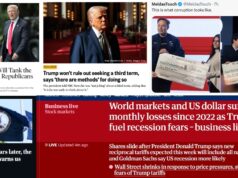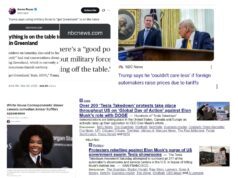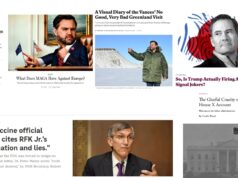by Jon Sokolow
This is Part 2 of a two-part series. Part 1 appeared here in Blue Virginia. References are to documents released under the Freedom of Information Act and published yesterday in Blue Virginia, here, here, here, here, here, here, here, here and here.
On August 23, Rachel Ellick, a Virginia Department of Health employee, wrote an email to Mountain Valley Pipeline lobbyist Rob Shinn:
“Dear Mr. Shinn,
I am reaching out regarding your recent correspondence with VDH with the request to review and discuss the COVID-19 preparedness plan for the Mountain Valley Pipeline workers. We are happy to set up a meeting with you this week or next week, and think it would be helpful to see the plan ahead of time to help guide our discussion. If you would please send us a copy of this plan, I can also follow up with you about setting up a meeting.” (emphasis added). Ellick 19.
Shinn responded:
“Agree that it would be productive to give you a copy of the plan prior to the meeting. Do you know if it would be subject to FOIA or covered under any exclusions? If the answer is no, MVP may still be OK sharing the actual plan but I would have to check.” (emphasis added). Ellick 18.
By September 3, MVP had not provided the plan to VDH. So Ellick, who was now on a first name basis with Shinn, wrote again about a planned meeting and asked:
“Hi Rob,
Have you heard from the MVP representatives? I’m out of the office next week, so it would be great to get this scheduled and a copy of their plan ahead of time so my team can review it.
Thanks, Rachel” (emphasis added). Ellick 27.
Shinn said he was hoping “to get approval to send the draft plan to you later today.” Ellick 22.
By the next day, MVP still had not provided a copy of their plan. But Ellick wrote Shinn to set up a Zoom call to discuss the plan anyway. Ellick 8.
MVP apparently was having regular contact with multiple VDH staff during this period, both by email and phone. On September 9, Julie Henderson, VDH Director of Environmental Health Services, wrote Shinn and referred to what she called our “standing meeting” with him. Henderson 1-2.
By September 11, the parties were talking about a planned Zoom meeting on September 15. But MVP still had not provided a copy of its COVID response plan. Henderson 5.
The Zoom call took place on September 15. But when this author asked VDH for a copy of the tape, we were told that the meeting “was hosted by Capital Results, which represents the Mountain Valley Pipeline.”
We also were told this: “VDH did not record the ZOOM meeting, nor does it know if Capital Results recorded the meeting. Any such recording, if it exists, would be in the possession of Capital Results.”
One of the participants in the meeting, however, kept notes.
In fact, she kept a diary.
VDH released the diary in response to a Freedom of Information Act request. It is published here for the first time.
The diary, which was kept by VDH employee Rachel Ellick, indicates that the meeting was attended by MVP’s lobbyist, Rob Shinn, Jessica Brisendine, an attorney for MVP, four VDH officials and Marvin Figueroa from the Governor’s office. The diary indicates that there had been a conversation between Matt Mansell, Northam’s policy director, and MVP, and that Mansell suggested that MVP contact VDH to go over their plans to “bring up to 2000 workers to Virginia (probably half already there, half coming in).” Ellick Diary 4.
Many questions went unanswered at this meeting. But a definitive answer was given to one question.
MVP refused to provide a copy of its COVID-19 preparedness plan to VDH.
MVP said they “didn’t want to send the plan due to FOIA.”
Instead, MVP would “walk through it on this call.” Ellick Diary 4.
But it turns out that this secret COVID preparedness plan is no plan at all.
Because MVP explained during the call that it “oversees contractor work” and “tells contractors minimum requirements to work on the poroject (sic).” The contractors and not MVP then “come up with a plan and submit for approval.” (emphasis added).
Let’s consider all of that for a moment.
MVP told VDH that it had a plan but refused to release it.
It then said that contractors, which do most if not all of the work on the pipeline, are required to submit their own plans to MVP.
But no copies of those plans were provided either – if they even exist.
It gets worse.
MVP said it had “requirements for quarantine.” But none of those requirements are mentioned in Ellick’s diary.
MVP also noted that it was aware of the letter sent by 22 state legislators in August calling for a halt to construction due to COVID. MVP addressed none of the legislators’ concerns, at least no discussion is reflected in the notes. Instead, MVP representatives dismissed the legislators’ letter, saying that “[t] number of people coming in is much smaller than the letter written by the delegates indicates.”
The delegates’ letter, however, expressly referenced the number of workers MVP itself had claimed would be working in the Virginia-West Virginia border area (more than 4,000) from an earnings call in May.
But it gets even worse.
Questions were asked about cohorting, meaning “are the people who will be housed or transported working closely together going to be cohorted for those other times when they will be close contacts.” That is an excellent question, because cohorting would affect the risk of transmission of disease.
MVP’s answer: “They don’t know about the independent contractors.” (emphasis added).
VDH asked “What about people who are going to be moving to the area.” That also is an excellent question, especially since MVP had conceded that at least half of the thousands of workers were coming from outside the area.
MVP refused to commit to anything regarding these out of state workers: “They may consider quarantine for people coming in from high areas, if they have the labor to cover it.” (emphasis added). Ellick Daily 4-5.
In other words, workers who should be quarantined would not be quarantined if MVP did not have other workers to replace them.
As always with MVP, public safety takes a back seat to the company’s work schedule.
The day after the Zoom meeting, Ellick wondered in her diary, “Do we pursue reviewing their plan.” She answered her own question, noting that “Laurie will follow up with Marvin.”
Let’s translate that. VDH Deputy Commissioner Laurie Forlano, who initially suggested that VDH’s review be limited – a suggestion immediately adopted by VDH Commissioner Norman Oliver – would consult with the Governor’s aide, Marvin Figueroa, who previously worked with MVP’s lobbyist Rob Shinn. Together, they would decide whether and how to follow up on a COVID response plan that MVP still refuses to disclose.
And people wonder why people don’t trust their government.
On September 25, VDH informed this writer that “VDH is not in possession of MVP’s preparedness plan.” And obviously VDH does not have copies of the contractors’ plans – if they even exist.
MVP did mention during this Zoom meeting that they had a “summary” of their plan on their website. And indeed they do have a two page summary, which they appear to have posted in August, five months into the pandemic.
The summary provides no comfort to anyone worried about MVP and its contractors causing a COVID outbreak in Southwest Virginia.
For starters, the summary confirms that the contractors must come up with their own plans. That is a crucial point because most, if not all, of the work on the pipeline is done by contractors. In fact, one of the main contractors, a Wisconsin company named Precision Pipeline, has a history of killing its own workers.
To date, there is no evidence that MVP’s contractors have developed any plans at all.
The MVP plan summary does talk about what workers who exhibit symptoms must do. But it does not specify what those symptoms are, how they will be detected and reported, who will provide testing if testing is required, or who, if anyone, is providing masks and other protective equipment.
The summary contains no requirement that workers will have their temperatures taken before entering a worksite. It does say temperatures will be taken “where additional monitoring is deemed advisable,” but there is no explanation of what the criteria are for that and who makes those decisions. Perhaps this is left to contractors, who are supposed to develop their own plans?
We simply do not know – and neither does VDH.
All of these private dealings between corporate lobbyists and taxpayer funded state employees happened behind closed doors, with no access or participation by healthcare professionals outside of VDH or concerned citizens along the path of the pipeline and throughout Virginia.
More than 43,000 people in Virginia and West Virginia are on record with the Federal Energy Regulatory Commission as saying the Mountain Valley Pipeline should be shut down.
None of them were invited behind these closed doors. And no one along the path of the pipeline, those who would be most directly harmed by a COVID-19 outbreak, were allowed in.
They were just dismissed as some sort of “determined opposition.”
It is bad enough that the Virginia Department of Health and Governor Northam are allowing thousands of out of state workers to come to Virginia and right across the border in West Virginia during a pandemic.
It is bad enough that MVP is being allowed to do this without taking the simple step of providing copies of their COVID preparedness plans and those of its contractors.
It is bad enough that state officials who are paid with taxpayer dollars ignore pleas from tens of thousands of concerned people in Virginia as well as their elected representatives and public health professionals.
It is bad enough that this is all happening during a deadly pandemic, in an area of Virginia where numbers are on the rise, for a fracked-gas pipeline that may very well never be built.
And it is bad enough that we are facing an even greater threat than COVID-19 – a climate emergency that is increasingly getting out of control.
What is worse is this: One well connected lobbyist can “call a friend” and have the doors of government opened wide for him. And those same taxpayer funded state employees just play along as if nothing is wrong here.
Something is very wrong here.
The system is fixed.
It needs to be broken.



 Sign up for the Blue Virginia weekly newsletter
Sign up for the Blue Virginia weekly newsletter






![Video: UVA Prof. Larry Sabato Says We “Need to Take [Trump] Seriously” Regarding His Threat to Seek a Third Term](https://bluevirginia.us/wp-content/uploads/2025/03/sabatocnn1-100x75.jpg)

